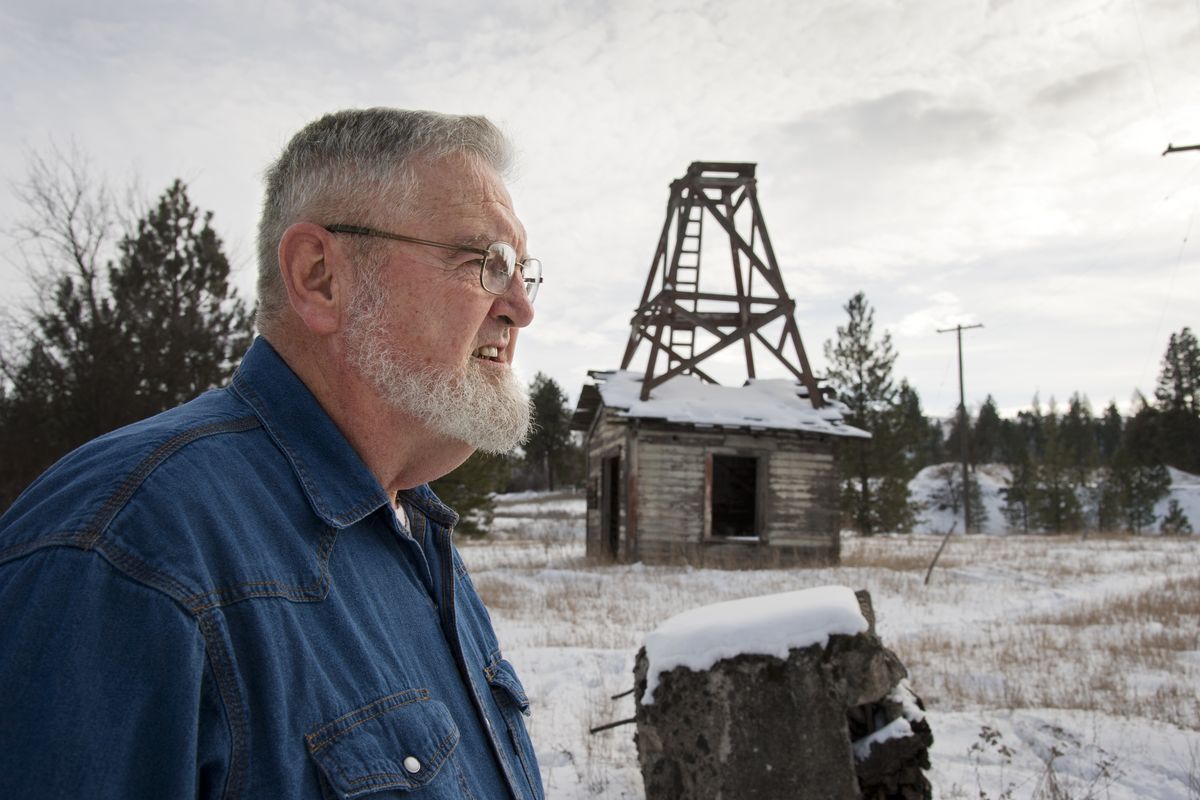Palouse section of old rail line to get master plan for trail

MALDEN, Wash. – A narrow, treeless corridor runs along scenic Pine Creek next to this tiny town in northern Whitman County.
It maintains a level line as it moves off into the distance in both directions. Broken and abandoned structures stand as ruins in what was once a railroad switching area.
This is the former transcontinental route of the Chicago, Milwaukee, St. Paul and Pacific Railroad, better known as the Milwaukee Road. The land is now owned by the state of Washington, thanks to legislative action in 1981.
To the west, the John Wayne Pioneer Trail – from the Columbia River westward to Cedar Falls, near North Bend – has been popular with bike riders and hikers for years. But in the Palouse, the trail remains an abandoned right of way. Trail development has long been left for the future.
Now, the Washington state Parks and Recreation Commission is considering a master plan that will outline how Palouse trail development will occur, including conversion of 9 miles of abandoned rail bed to a usable trail from Malden to Rosalia by 2015.

“The value of this trail is its quietness and remoteness,” said parks planner Jamie Van De Vanter.
Gates block general access to this portion of the old rail line, in contrast to the popular Route of the Hiawatha in North Idaho, part of the same Milwaukee Road line. Public access currently is allowed only by permit, which can be obtained through Riverside State Park.
On March 27 in Chehalis, the state parks commission will consider details such as land-use classifications, a master plan addition and park boundaries.
Minimal development would be allowed along the route. One exception would be a trailhead in Tekoa, which could be developed with amenities such as a campground.
Trailheads are planned for Malden, Rosalia, a crossing at Pandora and Tekoa, according to the proposal.
A concrete bridge carrying the trail at Rosalia is already listed on the National Register of Historic Places. Two other trestles – a large steel structure at Tekoa and another iron-truss bridge 8 miles west of there – are being recommended for historic register listings.
Malden Mayor Ted Maxwell said the county roads that run through his community often see a large number of bicyclists, vintage car enthusiasts and motorcycle touring during warmer months.
For bicyclists, the narrow county roads present a hazard. He said a trail would be safer for them.
Otherwise, Malden is not likely to benefit commercially since the town of 200 people has no retail businesses.
“We have no interests in growth or tourism or anything, but we think it would be nice for the bicyclists,” he said.
Maxwell said it’s too bad the line cannot be converted back to accommodate freight shipments, given the increased demand for oil and coal transport to West Coast ports.
The Washington state Department of Transportation has retained management of the segment from Lind to the Columbia River for potential rail development.
Trail development along Rock Lake is hampered by private ownerships of the old rail bed. Private ownership is also an issue in Idaho northeast of Tekoa.
Monte Morgan, a resident of Tekoa and longtime trail proponent, said he would like to see the Palouse segment completed to Plummer and be connected with the Trail of the Coeur d’Alenes, which runs on an old Union Pacific Railroad line from Plummer to Mullan. He said he has long hoped to see the trail completed in his lifetime.
The 975-foot-long steel trestle at Tekoa will require significant improvements to make it passable to trail users, he said.
“To me, No. 1 is we’ve got to get the bridge done,” he said.
But adoption of a master plan and conversion of 9 miles of rail bed is a start, he said. “At least it’s a step forward.”
Van De Vanter said the availability of funding is what is holding up trail completion.
One of the biggest proponents of trail development has been the John Wayne Pioneer Wagons and Riders Association, which is planning its 2014 cross-state ride from North Bend to Tekoa in late May and early June.
The group’s website said the line from Chicago to Seattle was built from 1906 to 1909 and electrified in 1915.
The initial purchase of 212 miles of line won legislative approval in 1981 at a cost of $1.9 million through Bankruptcy Court, according to news files.